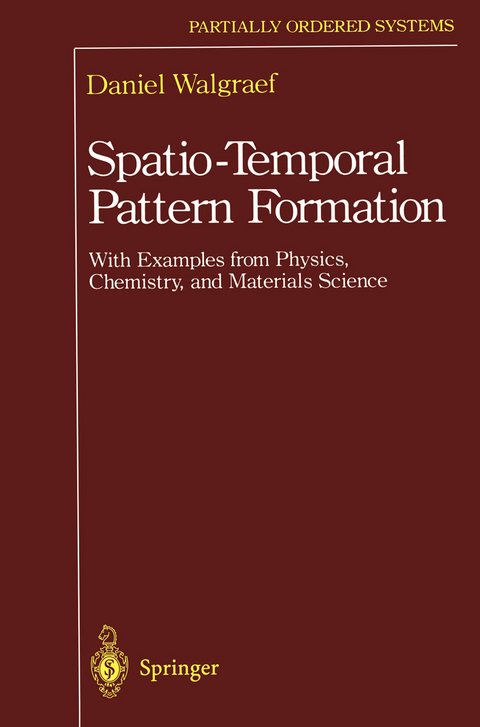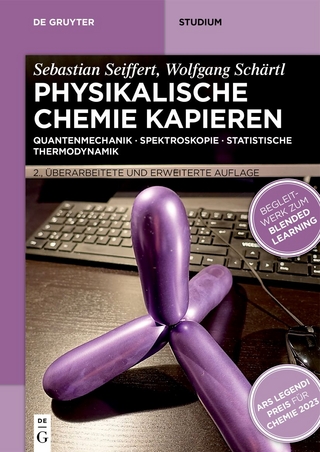
Spatio-Temporal Pattern Formation
Springer-Verlag New York Inc.
978-1-4612-7311-0 (ISBN)
1 Introduction.- 2 Instabilities and Patterns in Hydrodynamical Systems.- 2.1 Rayleigh-Bénard instability.- 2.2 Taylor-Couette instability.- 2.3 Liquid crystal instabilities.- 3 Instabilities and Patterns in Reaction-Diffusion Systems.- 3.1 Chemical instabilities.- 3.2 Defect microstructures in irradiated materials.- 3.3 Plastic deformation and dislocation patterns.- 4 Generic Aspects of Pattern-Forming Instabilities.- 4.1 Phenomenology.- 4.2 Reaction-diffusion dynamics and stability.- 4.3 Reduced dynamics and amplitude equations.- 4.4 Spatial patterns: selection and stability.- 4.5 Phase dynamics of periodic patterns.- 5 The Hopf Bifurcation and Related Spatio-Temporal Patterns.- 5.1 The generic aspects of oscillatory media.- 5.2 Real chemical systems and the complex Ginzburg-Landau equation.- 5.3 The effect of natural forcings on chemical oscillators.- 5.4 Conclusions.- 6 The Turing Instability and Associated Spatial Structures.- 6.1 The Turing mechanism.- 6.2 The search for Turing structures.- 6.3 At last, genuine Turing structures?.- 6.4 The interaction between Turing and Hopf instabilities.- 7 Defects and Defect Bifurcations.- 7.1 Generic existence of defects.- 7.2 Examples of defects.- 7.3 Defects and disorder.- 7.4 Bifurcation of defects.- 8 The Effect of External Fields.- 8.1 Spatial forcing of stationary patterns.- 8.2 Temporal forcing of a Hopf bifurcation.- 8.3 Temporal forcing of one-dimensional wave patterns.- 8.4 Temporal forcing of two-dimensional wave patterns.- 8.5 Spatial forcing of wave patterns.- 8.6 Flow field effects on pattern forming instabilities.- 8.7 The effect of noise on wave patterns.- 8.8 Conclusions.- 9 Fronts.- 9.1 One-dimensional aspects.- 9.2 Two-dimensional aspects.- 10 Pattern Formation: Generic versus Nongeneric Aspects.- 10.1Kinetic coefficients.- 10.2 Nongradient dynamics.- 10.3 Experimental set-ups.- 11 Microstructures in Irradiated Materials.- 11.1 Particle irradiation of metals and alloys.- 11.2 Laser induced deformation of surfaces.- 12 Plastic Instabilities.- 12.1 Dislocation dynamics and rate equations.- 12.2 Stability analysis and bifurcations.- 12.3 Nonlinear analysis.- 12.4 Multiple slip.- 13 Afterword.- 14 Appendices.- 14.1 Bifurcations and normal forms.- 14.2 More about dynamical models.- 14.3 The Brusselator: A toy model for pattern formation in RD systems.- 14.4 Resonant forcings of nonlinear oscillators.
| Reihe/Serie | Partially Ordered Systems |
|---|---|
| Zusatzinfo | X, 306 p. |
| Verlagsort | New York, NY |
| Sprache | englisch |
| Maße | 155 x 235 mm |
| Themenwelt | Naturwissenschaften ► Chemie ► Physikalische Chemie |
| Naturwissenschaften ► Physik / Astronomie ► Atom- / Kern- / Molekularphysik | |
| Naturwissenschaften ► Physik / Astronomie ► Festkörperphysik | |
| Naturwissenschaften ► Physik / Astronomie ► Thermodynamik | |
| ISBN-10 | 1-4612-7311-0 / 1461273110 |
| ISBN-13 | 978-1-4612-7311-0 / 9781461273110 |
| Zustand | Neuware |
| Informationen gemäß Produktsicherheitsverordnung (GPSR) | |
| Haben Sie eine Frage zum Produkt? |
aus dem Bereich


